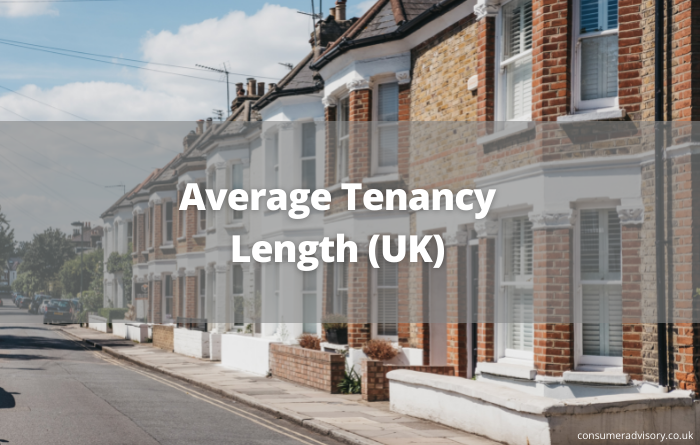The average tenancy length has increased from 14 months to 20, with London rentals averaging about two years. The average rent for a property in England is now 19+months compared favourably at about an 18-month period across all regions of the UK. Rented houses typically last 20 plus weeks before moving out or being replaced by another tenant
Where are the longest – and shortest – tenancies across the UK?
London is a city of renters. With average rental rates in the UK’s capital at 20 months, people don’t tend to rent for very long periods here–with South East London being an exception (and perhaps not too surprising). Kent City Of Sevenoaks has seen tenants stay far longer than they do elsewhere: It takes them just over 15 months on average! That said though there are some exceptions-Landsdowne castle endured 30+ month tenancies while Abergele halts its resident’s stays below two years thanks largely due
Regional differences
A recent study found that the regions with the highest median tenure were East of England, the East Midlands, and Northern England. People aged around 16 months came from Scotland’s North East, Scotland Edinburgh and Lothians, Glasgow and Clyde.
The West Midlands median tenure was 22 months, Southeast England at 21 months and Yorkshire and Humber at 19 months. The report also found that the regions with the lowest median tenure were Wales and London.
The study’s findings suggest that there are regional differences in the length of time people stay in their homes. These findings may be due to a variety of factors, including housing costs, employment opportunities, and lifestyle preferences.
Housing White Paper highlights tenancy lengths
The government’s Housing Regulatory Policy Paper has addressed housing issues and urged landlords to reduce long-term vacancies. In some cases, existing legislation enables the granting of three-year or long-term assured long-term leases by the landlord.
This would allow for more stability in the rental market and would encourage landlords to invest in their property and keep it in good condition. The paper also suggested that local authorities should have the power to enforce minimum standards for privately rented homes and that a national register of landlords should be established.
These measures would help to improve the quality of privately rented homes and make it easier for tenants to find good quality accommodation.
Tenants in favour of longer-term tenancies?
In recent years, there has been a shift in the rental market, with an increasing number of tenants looking for longer-term tenancy options. In response to this trend, Your Move has introduced a new type of tenancy agreement that offers tenants the flexibility to stay for longer periods.
This arrangement has already proven popular with tenants, and as a result, we have seen a significant increase in the length of tenancies.
The extended terms of these agreements provide Your Move with stability and certainty, two important factors that contribute to our success as a company.
We are confident that this trend will continue in the future, and we are committed to providing our tenants with the best possible experience.
Can a tenancy agreement be 5 years?
A tenancy is a legal agreement between a landlord and tenant, in which the tenant agrees to live in the property for a set period of time in exchange for regular payments.
Tenancies can either be fixed-term, in which case the tenant agrees to stay for a specific amount of time, or periodic, meaning that the tenancy rolls over automatically on a week-by-week or month-by-month basis.
Most tenancies begin as fixed-term agreements, with the length of time typically ranging from six months to three years. However, in some cases, such as where the tenant is a student or is moving for work, the tenancy may be for a shorter period of time.
Conversely, in some cases, such as where the tenant has a family or is elderly, the tenancy may be for a longer period of time. The maximum length of a fixed-term tenancy is five years, after which the tenancy becomes periodic.
The main advantage of a fixed-term tenancy is that it provides tenants with stability and security, as they know that they will be able to stay in the property for the length of time specified in the agreement.
The main disadvantage of a fixed-term tenancy is that it can be more difficult to end, as the tenant may be required to give notice or pay a break fee.
A periodic tenancy, on the other hand, gives tenants more flexibility, as they can choose to leave at any time, provided they give the landlord the appropriate notice period.
The main advantage of a periodic tenancy is that it gives tenants more control over their rental situation. The main disadvantage of a periodic tenancy is that it can be more expensive, as landlords may charge higher rent for the flexibility that it provides.
What if the tenant stays more than 10 years?
As a landlord, it is important to be aware of your rights and obligations when it comes to your tenants.
One common misconception is that a tenant who has lived in a property for many years has some sort of ‘squatters rights’. This is not the case. Unless the tenant has a legally binding lease, they are not entitled to stay in the property indefinitely.
If you as the landlord wish to reclaim possession of your property, you can do so through the eviction process.
The tenant may try to refuse to leave, but if you have followed the correct legal procedures then they will be obliged to do so. In summary, a tenant does not gain any extra rights simply by living in a property for a long time, and if you as the landlord
People also search for:
average tenancy lengths, average tenancy lengths UK, private rented sector, private rented sector UK, average length or average property rental with same property, UK’s rental properties, longer tenancies, longer tenancies for prospective tenants, average payments, rental contracts.

